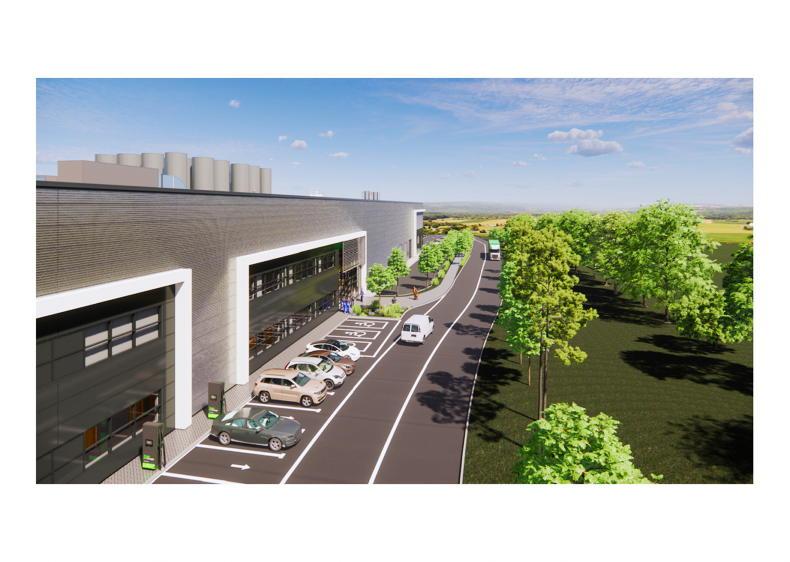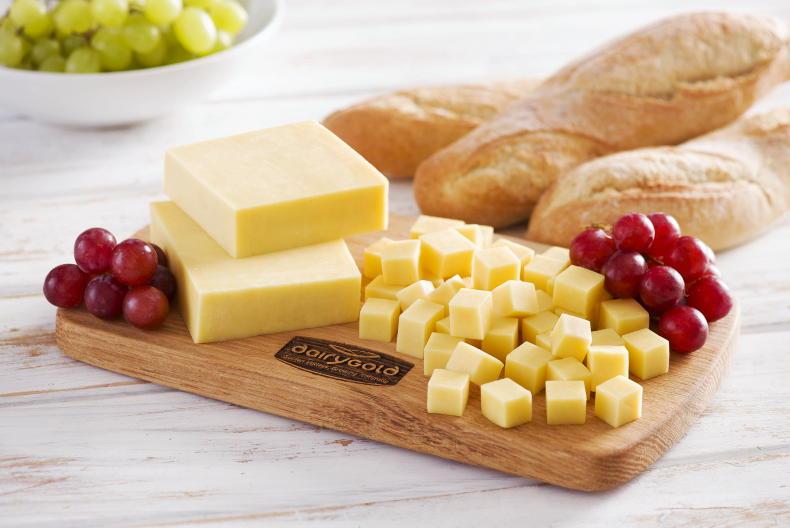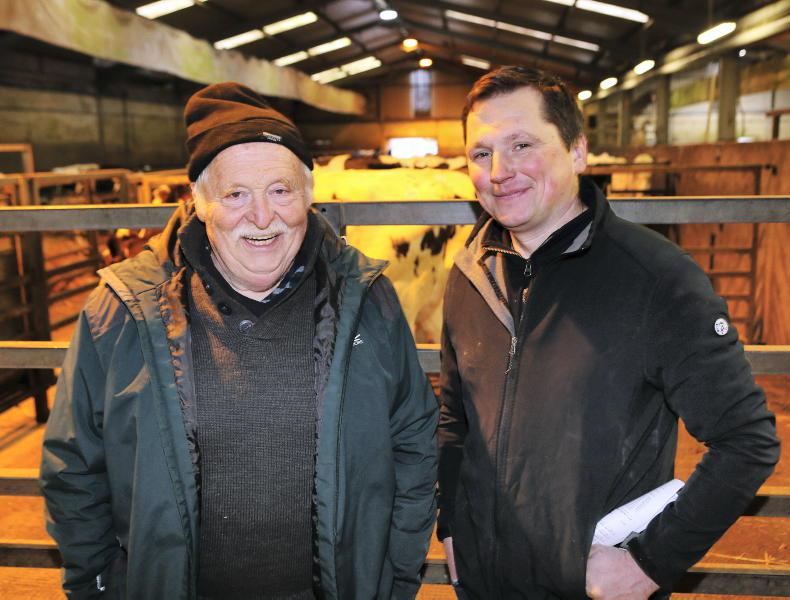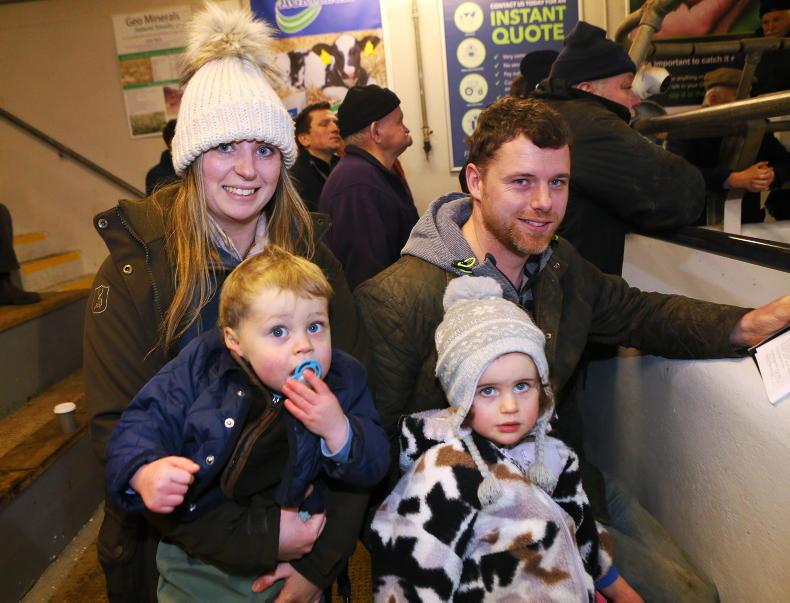Farmers and agri industry people think that given it is headquartered near Belfast in Northern Ireland with a portion of its milk pool in Britain, Dale Farm must be the king of fresh or liquid milk market in Northern Ireland. However, nothing could be further from the truth.
The industry widely recognises Carbery at the other end of the country as a cheese maker, and this is a fair assessment. However, the fact of the matter is that Dale Farm makes as much cheddar cheese as Carbery right now.
Last year Dale farm produced 60,000t of cheese. It’s by far the biggest income earner in a co-op that has eight different business units. From Mullins ice cream to United Feeds, the Dale Farm portfolio is broad. It produces anything from 20 to 40 new products every year to meet changing customer needs, requirements and market movements.
United Feeds has mills in Belfast and Dungannon. Between them they out over 250,000t of feed every year. The feed business is big in Northern Ireland, with significant competition from Thompsons and Fane Valley among many other companies selling feed.
Dale Farm milk suppliers are delivering more milk year on year when we look at the numbers.
Milk supply was up again in 2021 as the growth in volumes processed continues. The growth in turnover and milk processed makes the job a little easier for CEO Nick Whelan. While he said he rarely looks at turnover as a business measure, it makes business life somewhat easier when volumes and sales are increasing rather than tightening.
It’s not that long ago in Dale Farm that the average milk price was closer to 20p/l than 30p/l. The years 2015, 2016 and 2017 saw Dale Farm milk prices average between 19 and 22p/l. According to Dale Farm, the milk price story is much better now.
The annual accounts ending in March 2022 show milk price at 33.88p/l (39.5c/l), up from 28.3 p/l according to Dale Farm. Irish Farmers Journal analysis of Northern milk prices tends to agree that the Dale Farm milk price is ahead of its main competitor in Northern Ireland, Lakeland Dairies. When we calculate milk price at Northern average milk solids with transport costs factored in, Dale Farm is ahead of Lakeland by about 0.4p/l (April 2021 to Mar 2022).
Inflation
At the moment it isn’t milk price that keeps Whelan awake. The unprecedented rise in inflation is what is driving what he called a “ferocious increase” in prices for raw ingredients associated with many of the products Dale Farm produces. “Everyone knows about energy prices, but in labour, fruit, and packaging we are talking about inflation increases like we have never seen before for some of these,” he said.
Whelan suggested the inflation rise is in the order of 100% for some fruit that Dale Farm uses in ice cream and yoghurts, and 30% to 40% for many of the other components. He suggests retailers will need to deliver additional price increases of over 25% on already higher shop shelf prices.
When I pushed him that the likelihood of this happening was slim as retailers will fight to maintain lower prices for undervalued food, he disagreed, saying: “At the extreme they will simply end up with no product because processors are not prepared to sell products at a loss.”
Whelan also said that Dale Farm had made some hard decisions to exit some product categories already, such as high-protein milk.
The Dale Farm Annual Report hasn’t been published yet but the financials publicly reported last week ahead of the AGM in the autumn suggest it has reported its highest turnover and profit to date for the financial year ending March 2022.
Overall group turnover at the co-operative is up to €689m (£591m) (previous year £524m). Group operating profit was reported at €29.9m (£25.6m versus previous year £14.0m); group net profit before tax €25.8 (£22.1m versus previous year £8.2m) and EBITDA €39.4m (£33.8m versus previous year £20.8m).
The Dale Farm team also suggest that alongside the record profits is a decent milk price. They say the milk price paid to producers for the financial year averaged at 33.88p/l (39.4 c/l) – up 5.56p/l year on year – the highest Dale Farm has ever paid its farmers.
There is no independent audit of actual milk prices paid to milk suppliers in Northern Ireland to allow a fair like-for-like comparison between processors.
How many milk suppliers has Dale Farm in Britain and what volumes of milk?
We have in the order of 50 milk suppliers which in the overall context of 1,250 suppliers in NI means it’s a relatively small part of the business.
In terms of the core NI, it’s clear in the dairy business that cheese is number one, but to what extent?
Look, the best measure of this is we produce 60,000t of cheese – that’s significant and soaks up over 600,000 litres, which is a very large proportion of our overall milk pool.
Why has Dale Farm done nothing for suppliers in fixed-price schemes? They are 16p/l off market milk price, while Dale Farm is making record profits.
Look, this is a very difficult situation for the co-op, management and some milk suppliers. Of course, it’s not only an issue for our co-op.
Overall less than 10% of our milk pool in affected by the current situation that sees a 16p/l difference in milk price between the market price and the most recent fixed milk price. We stipulated a maximum of 15% of a supplier’s annual volume could be fixed and about 40% of our milk suppliers have some milk in a fixed-milk-price scheme. At the outset we were very clear that any contracted milk prices would not impact on ‘uncontracted’ milk price. Also as a business we have lots of contracts for various elements in the business such as energy etc and irrespective of changes we expect our input suppliers to stick by the agreed price. As discussed, we are also seeking inflation price hikes from retailers.
But, is there not room for the co-op to do something with record profits and co-op shareholders?
The board have discussed and continued to discuss this at length,but, the domino effect of breaking contracts could be much further reaching.
The Dale Farm business is doing well. The numbers and trend lines in Figures 1 to 4 speak for themselves. The challenge and vision for the business must be to ensure that current profits are channelled into future investment and asset replacement.
Record profits are fine and necessary but capital infrastructure needs reinvestment to allow for efficiencies and maintaining quality.
Unlike some of the southern co-ops where serious investment has taken place of late, the processing infrastructure in Dale Farm needs an investment injection sooner rather than later and ultimately the cost of this investment comes from retained profits or milk price paid out.
Government grant aid is not available in Northern Ireland, so the help some of the Southern processors get is not available to Dale Farm.
Last year Dale Farm produced 60,000t of cheese. It’s by far the biggest income earner in a company that has eight different business units.The unprecedented rise in inflation is driving a “ferocious increase” in prices for raw ingredients. Accounts ending in March 2022 show overall group turnover at Dale Farm is up to €689m (£591m, previous year £524m) and EBITDA was €39.4 (£33.8m versus previous year £20.8m).
Farmers and agri industry people think that given it is headquartered near Belfast in Northern Ireland with a portion of its milk pool in Britain, Dale Farm must be the king of fresh or liquid milk market in Northern Ireland. However, nothing could be further from the truth.
The industry widely recognises Carbery at the other end of the country as a cheese maker, and this is a fair assessment. However, the fact of the matter is that Dale Farm makes as much cheddar cheese as Carbery right now.
Last year Dale farm produced 60,000t of cheese. It’s by far the biggest income earner in a co-op that has eight different business units. From Mullins ice cream to United Feeds, the Dale Farm portfolio is broad. It produces anything from 20 to 40 new products every year to meet changing customer needs, requirements and market movements.
United Feeds has mills in Belfast and Dungannon. Between them they out over 250,000t of feed every year. The feed business is big in Northern Ireland, with significant competition from Thompsons and Fane Valley among many other companies selling feed.
Dale Farm milk suppliers are delivering more milk year on year when we look at the numbers.
Milk supply was up again in 2021 as the growth in volumes processed continues. The growth in turnover and milk processed makes the job a little easier for CEO Nick Whelan. While he said he rarely looks at turnover as a business measure, it makes business life somewhat easier when volumes and sales are increasing rather than tightening.
It’s not that long ago in Dale Farm that the average milk price was closer to 20p/l than 30p/l. The years 2015, 2016 and 2017 saw Dale Farm milk prices average between 19 and 22p/l. According to Dale Farm, the milk price story is much better now.
The annual accounts ending in March 2022 show milk price at 33.88p/l (39.5c/l), up from 28.3 p/l according to Dale Farm. Irish Farmers Journal analysis of Northern milk prices tends to agree that the Dale Farm milk price is ahead of its main competitor in Northern Ireland, Lakeland Dairies. When we calculate milk price at Northern average milk solids with transport costs factored in, Dale Farm is ahead of Lakeland by about 0.4p/l (April 2021 to Mar 2022).
Inflation
At the moment it isn’t milk price that keeps Whelan awake. The unprecedented rise in inflation is what is driving what he called a “ferocious increase” in prices for raw ingredients associated with many of the products Dale Farm produces. “Everyone knows about energy prices, but in labour, fruit, and packaging we are talking about inflation increases like we have never seen before for some of these,” he said.
Whelan suggested the inflation rise is in the order of 100% for some fruit that Dale Farm uses in ice cream and yoghurts, and 30% to 40% for many of the other components. He suggests retailers will need to deliver additional price increases of over 25% on already higher shop shelf prices.
When I pushed him that the likelihood of this happening was slim as retailers will fight to maintain lower prices for undervalued food, he disagreed, saying: “At the extreme they will simply end up with no product because processors are not prepared to sell products at a loss.”
Whelan also said that Dale Farm had made some hard decisions to exit some product categories already, such as high-protein milk.
The Dale Farm Annual Report hasn’t been published yet but the financials publicly reported last week ahead of the AGM in the autumn suggest it has reported its highest turnover and profit to date for the financial year ending March 2022.
Overall group turnover at the co-operative is up to €689m (£591m) (previous year £524m). Group operating profit was reported at €29.9m (£25.6m versus previous year £14.0m); group net profit before tax €25.8 (£22.1m versus previous year £8.2m) and EBITDA €39.4m (£33.8m versus previous year £20.8m).
The Dale Farm team also suggest that alongside the record profits is a decent milk price. They say the milk price paid to producers for the financial year averaged at 33.88p/l (39.4 c/l) – up 5.56p/l year on year – the highest Dale Farm has ever paid its farmers.
There is no independent audit of actual milk prices paid to milk suppliers in Northern Ireland to allow a fair like-for-like comparison between processors.
How many milk suppliers has Dale Farm in Britain and what volumes of milk?
We have in the order of 50 milk suppliers which in the overall context of 1,250 suppliers in NI means it’s a relatively small part of the business.
In terms of the core NI, it’s clear in the dairy business that cheese is number one, but to what extent?
Look, the best measure of this is we produce 60,000t of cheese – that’s significant and soaks up over 600,000 litres, which is a very large proportion of our overall milk pool.
Why has Dale Farm done nothing for suppliers in fixed-price schemes? They are 16p/l off market milk price, while Dale Farm is making record profits.
Look, this is a very difficult situation for the co-op, management and some milk suppliers. Of course, it’s not only an issue for our co-op.
Overall less than 10% of our milk pool in affected by the current situation that sees a 16p/l difference in milk price between the market price and the most recent fixed milk price. We stipulated a maximum of 15% of a supplier’s annual volume could be fixed and about 40% of our milk suppliers have some milk in a fixed-milk-price scheme. At the outset we were very clear that any contracted milk prices would not impact on ‘uncontracted’ milk price. Also as a business we have lots of contracts for various elements in the business such as energy etc and irrespective of changes we expect our input suppliers to stick by the agreed price. As discussed, we are also seeking inflation price hikes from retailers.
But, is there not room for the co-op to do something with record profits and co-op shareholders?
The board have discussed and continued to discuss this at length,but, the domino effect of breaking contracts could be much further reaching.
The Dale Farm business is doing well. The numbers and trend lines in Figures 1 to 4 speak for themselves. The challenge and vision for the business must be to ensure that current profits are channelled into future investment and asset replacement.
Record profits are fine and necessary but capital infrastructure needs reinvestment to allow for efficiencies and maintaining quality.
Unlike some of the southern co-ops where serious investment has taken place of late, the processing infrastructure in Dale Farm needs an investment injection sooner rather than later and ultimately the cost of this investment comes from retained profits or milk price paid out.
Government grant aid is not available in Northern Ireland, so the help some of the Southern processors get is not available to Dale Farm.
Last year Dale Farm produced 60,000t of cheese. It’s by far the biggest income earner in a company that has eight different business units.The unprecedented rise in inflation is driving a “ferocious increase” in prices for raw ingredients. Accounts ending in March 2022 show overall group turnover at Dale Farm is up to €689m (£591m, previous year £524m) and EBITDA was €39.4 (£33.8m versus previous year £20.8m). 








SHARING OPTIONS